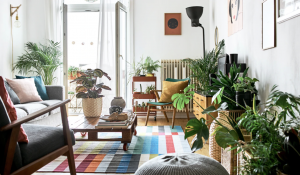
Lighting is a crucial element of interior design that can make or break the overall look and feel of a space. Proper lighting not only illuminates a room, but it also sets the mood and ambiance. Whether you want a cozy, intimate feel or a bright, airy atmosphere, lighting can help achieve your desired effect.
To make the most of your lighting, start by considering the function of each room. For example, a kitchen may require brighter, task-focused lighting for cooking and food preparation, while a bedroom may benefit from soft, dim lighting to create a relaxing ambiance.
Lighting is an essential element in creating a warm and inviting atmosphere in your home. Not only does it provide illumination, but it also sets the mood and enhances the overall aesthetic of your interior. In this article, we will discuss why lighting matters and provide tips for illuminating your interior.
The Importance of Lighting in Interior Design
Lighting is a crucial aspect of interior design that is often overlooked. It is not just about having enough light to see; it is about using light to enhance the functionality and beauty of your space. Proper lighting can transform a room from bland and uninspiring to cozy and inviting.
Lighting can be used to highlight architectural features, artwork, and decor, creating focal points in your space. It can also be used to create a particular ambiance, such as a warm and cozy feel or a bright and energetic atmosphere.
Lighting also plays a vital role in our daily activities. The right lighting can make reading, working, and cooking more comfortable and efficient. It can also affect our mood and energy levels, making us feel more relaxed or alert, depending on the type and intensity of light.
Tips for Illuminating Your Interior
Now that we understand the importance of lighting let’s discuss some tips for illuminating your interior:
Layer your lighting
- To create a well-lit and visually appealing space, it is essential to layer your lighting. This means using multiple light sources, such as ceiling lights, table lamps, and floor lamps, to create depth and dimension in your space. It also allows you to control the amount of light and create different moods throughout the day.
Choose the right bulbs
2. When selecting light bulbs, consider the color temperature, measured in Kelvin (K), and the lumens, which measure the brightness. Warm, yellowish light (2700K-3000K) is ideal for creating a cozy and relaxing atmosphere, while cool, bluish light (5000K-6500K) is better for task-oriented activities like reading and working.
Consider the size and height of your space
3. The size and height of your space should also be considered when choosing lighting fixtures. A small room with low ceilings may benefit from flush mount or semi-flush mount fixtures, while a larger room with high ceilings may require pendant or chandelier lighting to create balance and visual interest.
Use lighting to highlight artwork and decor
4. Use lighting to draw attention to artwork, decor, and other architectural features in your space. Wall-mounted picture lights or adjustable track lighting can be used to highlight artwork, while accent lighting can be used to illuminate decorative items like vases and sculptures.
Install dimmer switches
5. Dimmer switches are an excellent way to control the amount of light in a room and create different moods. They are also energy-efficient, as they allow you to use less light when appropriate, saving you money on your energy bill.
Conclusion
In conclusion, lighting plays a crucial role in interior design and should not be overlooked. By layering your lighting, choosing the right bulbs, considering the size and height of your space, using lighting to highlight artwork and decor, and installing dimmer switches, you can create a warm and inviting atmosphere in your home that enhances your daily activities and mood.



